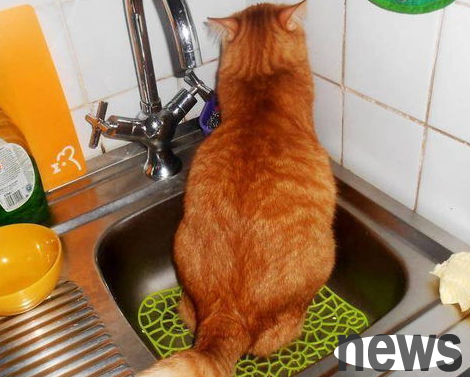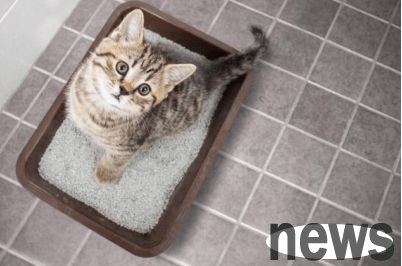Lower Urinary Tract Disease of Cats (FLUTD) refers to a general term for a series of symptoms that affect the cat's lower urinary system. Some people think that FLUTD refers specifically to a certain disease, but this is actually a misunderstanding. Simply put, the symptoms of the bladder and urethra (including the urethral orifice) can be regarded as being included in FLUTD, which is their general term. Cats' urinary system diseases are not so easy to be discovered in the early stages, because cats are not like dogs and can pee in full view. Cats usually don't like to be seen when peeing, so cat owners usually find that the cat has problems when it is very serious, and sometimes it is too late. How can we find that cats are inappropriate to be sent to the hospital earlier?

Male cats are more likely to suffer from upper and lower urinary tract diseases
Why do we say that FLUTD is a mysterious killer of cats? Because many times, we can't find the cause of cats' illness. Some sick cats cannot detect obvious causes of tumors, bacteria, stones or crystals during medical examinations, but cats develop hematuria or even urethral obstruction. We call this disease spontaneous cystitis (FIC). It is understood that among all cats' lower urinary tract diseases, 50 to 60% are spontaneous cystitis. Some studies believe that spontaneous cystitis is closely related to psychological stress and environmental changes, because many cats have changes in their environment or have new members at home before they start to have an illness. Therefore, after the cat owner moves or increases the number of pets, he should pay more attention to the cat's situation, accompany and comfort the cat more, which will help reduce the risk of the disease.

The urethra of male cats is characterized by long and narrowness, which makes urethra obstruction in male cats have a congenital "advantage" over female cats. No matter which cause FLUTD, it can cause urethra obstruction in male cats, sometimes stones, sometimes peeling bladder mucosal epithelium, or a mixture of the two. Therefore, the risk of getting this disease is very high. When the urethra is blocked, the kidneys cannot remove toxins from the blood and maintain the balance between fluid and electrolytes in the body. Cats may experience uremia and electrolyte disorders, leading to heart failure. Early visits to the hospital are key. Repeated urethral obstruction can cause irreparable damage to renal function, resulting in renal failure conditions. Therefore, for male cats who have relapsed many times in this disease, urethral surgery is currently the most effective way to solve this problem. Although the problems of crystallization and bladder mucosa epithelium cannot be solved after surgery, cats without urethral obstruction can live longer and healthier.
Therefore, early detection of the condition is very critical to treatment. If your cat has one of the following symptoms, you should pay special attention, it may have FLUTD. If your cat is a boy, you should pay more attention, because it is very likely that its urethra is blocked and cannot urinate, so you need to go to the veterinary office immediately.
Symptoms of FLUTD
1. Pee very hard, sometimes only a few drops will appear at a time. Sometimes the owner mistakenly thinks that the cat is constipated;
2. The urine is red or light red;
3. The frequency of peeing increases (that is, you often have to go to the toilet);
4. Licking your private parts all day long, abnormally often;
5. Suddenly no longer pee in the original place (for example, it usually pee in the cat litter basin, but suddenly pee in the bathroom);
6. Cry or scream in the cat litter basin (some cats also cry near the cat litter basin);
7. Pee on the floor next to or near the cat litter basin.
8. Eat less than before, and loves to sleep, or feel uncomfortable when you caress or pick it up. Living healthy and reducing the risk of recurrence
What should I do if there is a cat who has unfortunately suffered from FLUTD at home? We don’t have to do anything! Changes in life and diet can reduce the risk of recurrence in cats. Eat less and eat more. Soak the cat food in broth or water to soften it or change it directly into canned cat food. Eating less and more meals can help digestion of food. Dry cat food contains only 10% moisture, while canned food contains 70% moisture. If the cat rarely drinks water on its own, feeding canned food is a good choice. However, be careful not to feed canned foods containing seafood. High protein and high magnesium content of seafood are both badly affected by FLUTD. If your cat has a history of struvite crystals/stones, it is best to feed prescription foods with acidified urine to prevent recurrence. Make your cat drink as much water as possible. As long as it is willing to drink it, fish soup and broth are very good choices. Waterfall water dispensers can also increase cats' interest in drinking water.
Keep the cat litter box clean and hygienic at any time. If there are more than one cat at home, try to provide more litter boxes, because some studies have pointed out that some cats will cause psychological stress because they do not like to share litter boxes with other cats, which will cause FIC. In addition, reduce changes in the home environment, give cats a cat tree to climb, and provide cat scratch boards and chase toys. These all help reduce stress in your cat.
Obesity is a cause of many diseases, and sterilization and keeping cats slim are necessary!
